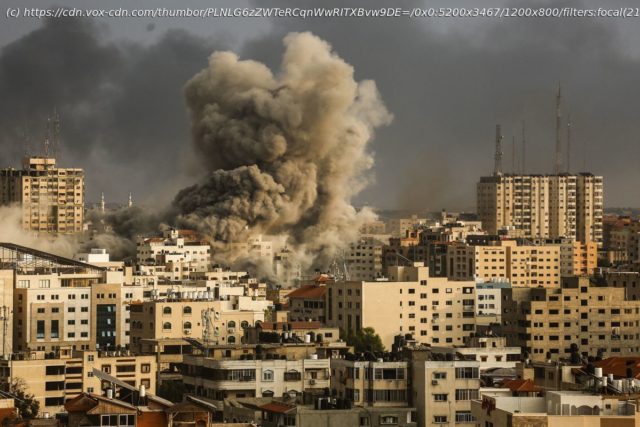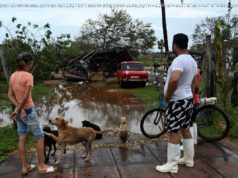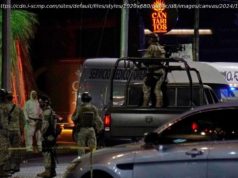Why did Hamas attack Israel now? How is the US responding? Here’s what you need to know to understand the conflict.
Israel and Hamas are involved in their worst outbreak of violence in decades, one that has already claimed over 3,600 lives as of Saturday, and likely will claim many more.
The armed wing of the Palestinian group Hamas launched a massive, complex, and well-coordinated attack on Israel early on October 7 from the territory it controls in Gaza. Militants killed more than 1,200 people — including at least 25 US citizens — wounded 3,000, kidnapped civilians, including US citizens and reportedly soldiers, and fired rockets on Israeli civilians.
It was the most devastating and brutal assault Israel had suffered in decades; Israeli officials described it as their country’s 9/11. The horror of the attack has only become clearer in the days since, as reports of some — if not all — of the worst atrocities were confirmed.
In response, the country officially declared war against Hamas on October 8. The declaration comes after the Biden administration’s promise of additional support for Israel and the announced movement of several US warships and aircraft squadrons into the Eastern Mediterranean. Several countries, including Egypt and Jordan, have volunteered to try to defuse the situation diplomatically.
On Thursday, the IDF told Gazans in the north of the region — where approximately 1.1 million people live — that they should relocate to the south within 24 hours. According to Axios’s Barak Ravid, the IDF announcement indicated that the military would “continue to operate significantly in Gaza City” and will “make extensive efforts to avoid harming civilians.” On Sunday, another, brief evacuation window was opened to allow Gazans to flee south.
Many observers are taking this to indicate that a ground invasion is imminent.
UN officials have warned that such an evacuation — which includes UN staff and those sheltering in UN facilities — will be impossible without “devastating humanitarian consequences,” according to Stéfane Dujarric, spokesperson for the UN Secretary-General, quoted in the Axios story. Israel has shut its border with Gaza, and while Egypt has offered aid, its border with Gaza is effectively closed, leaving nowhere to go.
Israel had announced a siege against Gaza Monday after a barrage of airstrikes against the territory starting last Saturday, October 7, which has killed over 2,000 people there in the past week, according to local authorities. United Nations Secretary-General António Guterres denounced the siege in a Monday briefing, saying, “The humanitarian situation in Gaza was extremely dire before these hostilities; now it will only deteriorate exponentially.”
There were factors that likely contributed more immediately to this outbreak of violence — months of simmering conflict in Jerusalem and the West Bank over increased Israeli settlements, a far-right Israeli government that has been conducting a de facto annexation of the West Bank, and Israeli-Saudi negotiations about normalizing relations — but it is also a war decades in the making.
Most Gazans are either refugees from the 1948 Nakba, when mass numbers of Palestinians were displaced during the Arab-Israeli War, or descendants of those refugees, said Zaha Hassan, a human rights lawyer and fellow at the Carnegie Endowment for International Peace. They’ve lived under a strict blockade by Israel and Egypt since Hamas assumed control of the Gaza Strip in 2007, relying on foreign aid to access basic necessities. About one-third of Gazans live in extreme poverty, according to the Palestinian Central Bureau of Statistics.
The international community has largely abandoned efforts to find a political solution to this crisis. Now there is likely to be a long, bloody battle causing significant deaths on both sides, with Palestinians set to bear the brunt of the casualties and destruction going forward. 1. Where does the conflict currently stand?
Gaza residents were advised to evacuate the northern portion of the territory ahead of what many believe to be an impending ground assault. The Israeli military said Tuesday it had retaken and secured the border with Gaza; its retaliation against Hamas and bombardment of Gaza has ramped up.
Israeli Defense Minister Yoav Gallant announced Monday a siege on Gaza, on top of the blockade that Egypt and Israel enacted on the region 16 years ago after Hamas took power. So far, access to electricity, fuel, and food has been cut off to Gaza during the siege. Two million people are at risk of running out of water and tens of thousands are struggling to find basic necessities like food, water, and shelter, reports the New York Times.
The next phase of the war could include a ground invasion of Gaza; more than 360,000 reservists have been called up, a record number. Such an invasion would be highly fraught for the Israel Defense Forces, which will have to contend with chaotic fighting on Gaza’s dense streets. Netanyahu has been reluctant to put boots on the ground in Gaza since Israel formally withdrew troops in 2005 after 38 years of occupation.
But now, given political pressures — not to mention the fact that Hamas and Palestinian Islamic Jihad militants are holding Israeli civilian and military hostages inside Gaza — a ground invasion is certainly possible.
“We have to go in,” Netanyahu reportedly told US President Joe Biden last week, according to Axios’s Barak Ravid.
It’s not yet clear how these decisions might be affected by the emergency “unity government” Netanyahu formed with an opposition party Wednesday that will reduce the influence of some far-right members of Netanyahu’s government and create a small war cabinet to oversee the fighting.
In addition to those killed so far, thousands of Israelis have been wounded. At least 64 people have been taken hostage — the Israeli military estimates that number may be as high as 150 — and Hamas officials have threatened to execute one civilian captive each time IDF strikes hit a civilian target in Gaza without prior warning. “These actions constitute heinous violations of international law and international crimes, for which there must be urgent accountability,” UN independent experts said in a statement Thursday.
Palestinian casualties are also high, as Israel bombards the densely populated strip. As of Saturday, IDF air strikes have injured more than 9,200 Gazans and killed more than 2,450 people, according to local authorities. On Tuesday, the IDF said it had killed 1,500 Hamas militants in fighting; it was not immediately clear how many of those casualties overlap with previously reported figures from Palestinian authorities. Some 218,600 people are sheltering in facilities run by UNRWA, the UN agency that assists Palestinian refugees; two of those facilities have been hit during the bombardment.
“Hospitals are overcrowded with injured people, there is a shortage of drugs and [medical supplies], and a shortage of fuel for generators,” Ayman Al-Djaroucha, MSF deputy coordinator in Gaza, said Sunday. Ambulances are also unable to run, according to MSF staff, as they are being hit in airstrikes.
Israeli security forces and some settlers have killed 54 Palestinians in the West Bank amid clashes as of Saturday morning, according to the Palestinian Ministry of Health.
—Ellen Ioanes2. What do I need to understand about Gaza and Israel’s relationship to understand today?
Palestinians living in Gaza and Israelis have always been deeply connected.
With Israel’s victory in the 1967 War, it conquered Gaza and became an occupying power overseeing the Palestinians living there. (Egypt had controlled the territory from 1948 to 1967.) Israel had not always so severely fenced off Gaza from the rest of the world or blockaded flows in and out of it. For several decades, Palestinians from Gaza worked in the Israeli economy. Starting in 1970, Israel established settlements in the territory and military installations.






